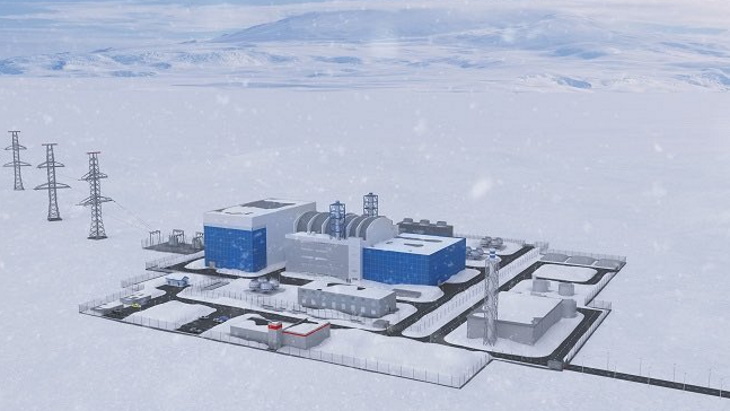Nuclear to power remote gold mine
Nuclear power is the required energy source for development of the Russian gold deposit at Kyuchus, the country's minister of natural resources and the environment, Alexander Kozlov made clear as the deposit's development rights were auctioned. The small reactor planned for Ust-Kuyga will supply the mine.

How a power plant based on RITM-200 technology could appear (Image: Rusatom Overseas)
"It is important that for the first time, one of the special conditions of the auction spelled out the use of at least 35 MWe of nuclear electricity, to be supplied by a small nuclear power plant in Yakutia," said Kozlov.
The small nuclear power plant in question is planned for construction at Ust-Kuyga. It will produce about 55 MWe from a single RITM-200N reactor. The regional government has agreed to take up to 50 MWe of the plant's production, with 35 MWe of this apparently being sold on to the mining operation. A licence for construction is expected to be issued in 2024.
There is virtually no infrastructure in the area of Kyuchus. The ministry said nuclear power "will make it possible not only to develop the field, but also to provide energy to the nearby territories. According to the auction conditions, no later than 30 June 2028, the winner of the auction must start using nuclear power, which must be supplied by the small nuclear power plant in the Yakutia region. In addition, the winner is obliged to ensure the level of production of at least 10 tons of gold per year from the date of reaching the design capacity."
A company called Beloye Zoloto won the auction, paying RUB7.7 billion (USD107.7 million) as a one-time payment for subsurface resources at Kyuchus, which are estimated to be as much as 250 tons of gold. Among the unsuccessful bidders were uranium miners Atomredmetzoloto and the Priargunsky Industrial Mining and Chemical Combine.
Separately, the development of another large mineral deposit in the Russian Arctic is also being supported by small nuclear reactors. Baimskaya is a copper and gold project in the Chukotka region which will be powered by two floating power plants at Cape Nagloynyn, each with two RITM-200M units, from 2027.
Researched and written by World Nuclear News
- China Institute of Atomic Energy
- Nuclear Power Institute of China
- Southwestern Institute of Physics
- China Nuclear Power Operation Technology Corporation, Ltd.
- China Nuclear Power Engineering Co., Ltd.
- China Institute for Radiation Protection
- Beijing Research Institute of Uranium Geology (BRIUG)
- China Institute of Nuclear Industry Strategy (CINIS)
- China Nuclear Mining Science and Technology Corporation


